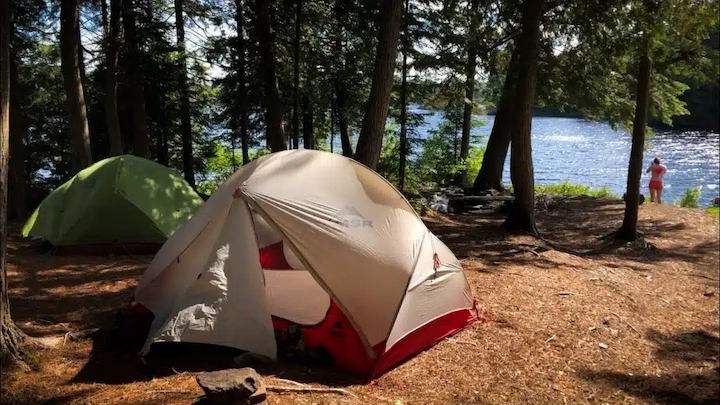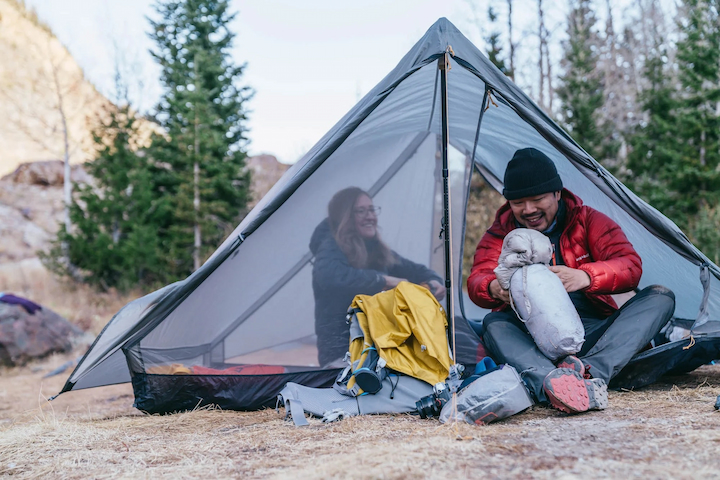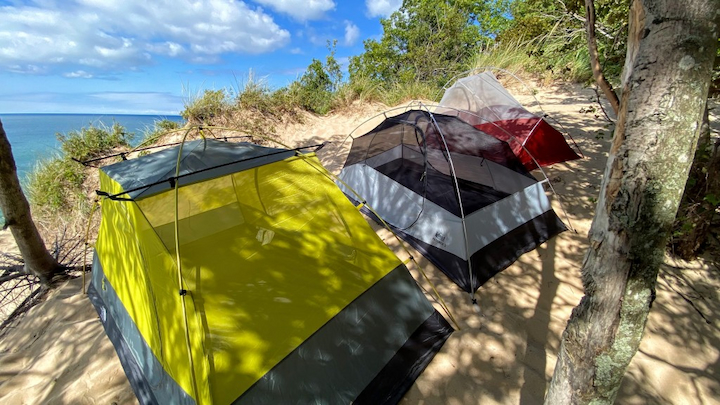Car camping or preparing for a multi-day thru trek, the tent is one of the most crucial pieces of equipment you’ll choose. It is what keeps you secure, dry, and warm no matter what happens, so picking the proper one can either make or break your trip.
However, buying the right option is a big deal as there are countless tent alternatives, and you certainly don’t want to end up camping or hiking with the wrong one. To make the process as simple as possible, the following guide will walk you through tents’ major features, their purpose, and help you learn their significance.
Size

In terms of size, many thru-hikers and backpackers even in the 21 century still argue over whether to bring a 1-person or 2-person tent on their trip. If you need additional space for your gear, room for more people or pets, and want greater comfort if you get stuck inside due to bad weather then lightweight and durable 2 person tents are your best buy!
After you have finally arrived at your destination you want to set up all of your stuff as soon as you can. To get protection from the elements and any animals that might walk through the campsite at night, most people keep their backpacks and other valuable possessions inside their tent.
However, backpacks stuffed with gear can be pretty substantial for a thru-hike, and a 2 man tent offers enough room for all that gear to be stored inside without restricting where you can lay your legs when sleeping. Even those who intend to trek alone most of the time don’t do so!
You can have pals that wish to go camping for the first time but lack the necessary supplies, or relatives who come to travel with you from somewhere else. Dogs make great camping companions as well. But you should keep them in the tent with you when it’s time to sleep. However, it won’t be possible with a 1-person tent, so a 2 person tent will be your most valuable solution here.
Keep in mind though that the majority of 2 man tents are 1.5-person tents, especially for taller or larger people. But, if you need extra gear storage and space for several people and pets then you should definitely consider larger options such as three, four, six, eight or ten-person tents.
Comfort

The next thing you should think about when buying a tent is what comfort means to you. Some individuals, for example, prefer being warm and comfy inside, while others prefer hammock camping. No matter how you define comfort, your tent should match your demands and personal preferences.
In terms of comfort, the vestibule space is a great contributor to it. Your vestibule should be either your front or rear porch. It is preferable to store wet shoes, bags, and occasionally heavier objects like coolers and bikes in a vestibule rather than out on the camp table. This keeps them accessible, outside of the main portion of your tent, and weatherproof.
Larger vestibules make tents feel larger. In the event of a hurricane, many places will let you cook and relax while you wait it out. Other important comfort considerations are pockets, clips, and storage, especially when 2 person tents are in question.
It’s often convenient to have a designated place for storing your phone, wallet, watch, glasses, and other items so they are protected from trampled feet and don’t end up lost beneath sleeping bags. Additionally, some tents come with features like clotheslines to keep your belongings off the ground, or pockets that are detachable or adjustable so you can put them anywhere you wish.
Weather Resistance
Anyone who has spent a few nights outside knows that even on the warmest, sunniest day, it can get cold, windy, or both in the evening. So, it’s important to have a tent with which you can be prepared for any weather.
Large windows, vents, and tents with mesh ceilings are ideal for handling hotter weather. Additionally, if your preferred camping places are exposed to the light, avoiding dark colours can be beneficial.
Also, make sure your tent has a fly integrated or included. You won’t want to be without one if the rain starts to fall. Keep an eye out for the size of the fly, and the angles and awnings it generates-it should have a bigger footprint than the tent itself.
Ventilation

The quantity of ventilation the tent permits can have a significant impact on the interior temperature if you normally camp in warmer locations. Features like large mesh windows, doors, and strategically placed vents all work together to reduce the amount of perspiration you produce while cooking.
The trade-off is in storm resistance because additional mesh, windows, and vents provide rain and wind more places to enter when the weather isn’t perfect and sunny. Be that as it may, when it’s chilly and rainy outside, sitting in a hot box can cause precipitation and get you just as wet as a hole in your tent.
Ease of Use
No one wants to pitch a convoluted tent, so there is nothing wrong in expressing that. It’s also acceptable to not want to read directions or argue with your spouse to set up a tent because we don’t want any of those things. Therefore, it makes sense that a tent that is simpler to use will be utilized more frequently.
The best tip we can give you is to practice setting up your tent before going camping because it might be difficult to judge ease of use whether you’re at the store or shopping online. Although it could seem like a waste of time, this comes with two benefits.
First, you get to practice and make sure there are no unexpected problems. Second, you will be aware if you have acquired a damaged tent or are missing pieces before going into the woods. Be sure to completely pitch your tent when doing so at home. Set up all the guy lines, put on the rain fly, and stake out the entire area.